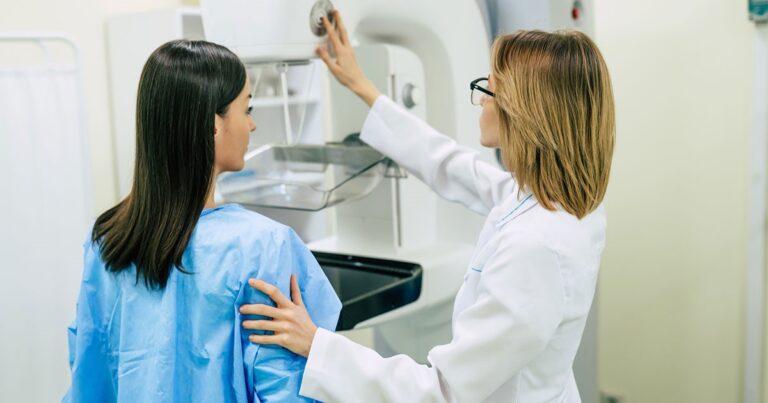With regards to bosom disease screening and analysis, two broadly utilized imaging strategies are bosom ultrasound and mammography. While the two strategies serve the objective of identifying bosom anomalies, they contrast in their methodology and abilities. In this blog entry, we will investigate the distinctions between private breast ultrasound and mammography, studying their unique benefits and how they complement each other in the field of breast health.
Table of Contents
Understanding Mammography
Mammography is a well-known and laid-out evaluating device for bosom malignant growth location. It utilizes low-portion X-beams to make nitty-gritty pictures of the bosom tissue. During a mammogram, the bosom is compacted between two plates, and X-beam pictures are taken from various points. These pictures are then deciphered by radiologists to detect any indications of strange developments, calcifications, or other dubious discoveries.
Mammograms are a significant first-line screening device utilized for ladies matured more than 40 to recognize early indications of bosom malignant growth. As ladies hit their 40s, the gamble of bosom malignant growth increments, essentially making customary mammograms significant for early identification and further developed treatment results.
Benefits of Mammography
Mammography offers a few critical advantages in bosom malignant growth counteraction. It has been broadly examined and demonstrated to diminish death rates by distinguishing bosom disease at the beginning phase when it is generally treatable. Mammograms are successful at finding microcalcifications which can be early indications of bosom disease as well as distinguishing masses or growths.
Understanding Breast Ultrasound
The bosom ultrasound then again utilizes sound waves to make pictures of the bosom tissue. During the interaction, a gel is applied to the bosom, and a transducer is delicately gotten across the skin surface. The transducer produces sound waves that enter the bosom tissue and return quickly to make continuous pictures introduced on a screen.
Benefits of Breast Ultrasound
Breast ultrasound offers unique advantages in certain scenarios. It is particularly useful in evaluating breast lumps or masses found during a physical examination or spotted on a mammogram. Ultrasound can help distinguish between solid masses and fluid-filled cysts, helping in the characterization of abnormalities. It is a non-invasive procedure without the use of radiation, making it safe for pregnant women and young people. Additionally, breast ultrasound can guide minimally invasive procedures such as biopsies with precision lowering the need for more invasive approaches.
Complementary Roles in Breast Health
Breast ultrasound and mammography are not competing methods but rather complementary tools in the field of breast health. They have unique strengths that, when used together, provide a more comprehensive evaluation of breast abnormalities.
Mammography as a Screening Tool
Mammography is viewed as the highest quality level for bosom malignant growth separating everyone. It has demonstrated viability in distinguishing beginning-phase bosom disease and is reasonable for a wide variety of bosom sizes and densities. Customary mammographic screenings are suggested for ladies over a specific age or those at high gamble for bosom disease.
The Role of Ultrasound in Supplemental Screening
Breast ultrasound plays a useful role as a supplemental screening tool, especially for women with dense breast tissue. Dense breasts have more glandular and fibrous tissue making it more difficult to spot abnormalities on mammograms. In these cases, ultrasound can provide additional information and help identify small cancers that may be missed by mammography alone.
Diagnostic Applications
Both breast ultrasound and mammography are utilized in the diagnostic setting. Mammography is often the first-line imaging modality for further evaluation of suspicious findings such as palpable lumps or abnormalities detected on screening. If additional information is required to characterize a breast abnormality, ultrasound can provide real-time images and help guide targeted biopsies enhancing diagnostic accuracy.
Conclusion
Breast ultrasound and mammography serve separate but complementary roles in breast health. Mammography is generally recognized as the primary screening tool with proven efficacy in detecting early-stage breast cancer. Breast ultrasound, on the other hand, offers unique benefits such as real-time imaging differentiation of solid masses and cysts and guidance for minimally invasive treatments.
Understanding the differences and benefits of each modality allows healthcare workers to determine the most appropriate imaging approach for individual patients. In some cases both mammography and ultrasound may be suggested to ensure a comprehensive evaluation of breast abnormalities. By combining the strengths of these imaging methods, we can improve early detection, facilitate accurate diagnoses, and ultimately enhance patient outcomes in the field of breast health.
Breast ultrasound and mammography are both important tools for breast health, but they have different strengths and weaknesses. Mammograms are better at detecting early-stage breast cancer, especially in dense breasts. Ultrasound is better at visualizing superficial lumps and differentiating between solid masses and cysts. It is also used to guide minimally invasive procedures such as biopsies and drainage of cysts.
In general, mammography is recommended as the primary screening tool for breast cancer in women over the age of 40. However, ultrasound may be used as an adjunct to mammography in women with dense breasts or in women who have a family history of breast cancer. Ultrasound may also be used to evaluate breast abnormalities that are found on a mammogram.

